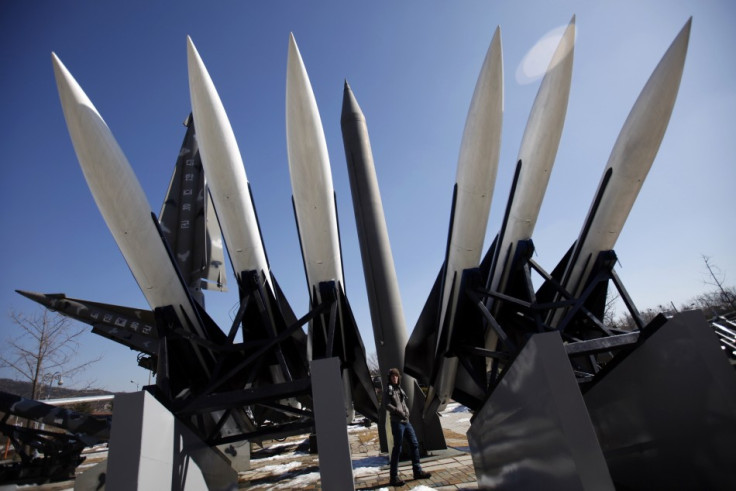North Korea Moves Missile to Face US Hours After Nuclear Threat

North Korea has moved a missile to its east coast just hours after reportedly giving a green light to a "diversified" nuclear attack on the US.
However, as the war of words with Washington continues, doubts remain on the actual range of the missile as well as Pyongyang's nuclear weapons capability.
South Korea's defence minister Kim Kwan-jin dismissed claims by Japanese media that the missile could be a long-range ballistic weapon, potentially capable of hitting the US mainland.
Kim told a parliamentary hearing that the missile's range is considerable but not far enough to hit the US, and might have been moved by Pyongyang "for testing or drills."
The missile was reportedly spotted while being carried on a cargo train heading to an area off the North Korean Sea, which is home to the Musudan-ri and Kittaeryong missile bases.
Japanese newspaper Asahi Shimbun, backed up by US sources, maintained it could be a KN-08 long range missile, which Pyongyang claims to have a 10,000km range.
"From what we know of its existing inventory, North Korea has short- and medium-range missiles that could complicate a situation on the Korean Peninsula (and perhaps reach Japan), but we have not seen any evidence that it has long-range missiles that could strike the continental US, Guam or Hawaii," James Hardy, Asia Pacific editor of IHS Jane's Defence Weekly, said in a recent analysis.
Nuclear threat
Pyongyang earlier said it has authorised its military to attack the US using "cutting-edge smaller, lighter and diversified" nuclear weapons.
"The ever-escalating US hostile policy towards the DPRK [North Korea] and its reckless nuclear threat will be smashed," the message carried by North Korean news agency KCNA read.
Minutes earlier, Washington had announced it was moving a missile shield to the Pacific island of Guam in response of what US Defence Secretary Chuck Hagel described as "a real and clear danger," coming from Pyongyang.
"I don't believe North Korea has the capacity to attack the United States with nuclear weapons mounted on missiles, and won't for many years. Its ability to target and strike South Korea is also very limited," said nuclear scientist Siegfried Hecker, a senior fellow at the Center for International Security and Cooperation at Stanford University.
"And even if Pyongyang had the technical means, why would the regime want to launch a nuclear attack when it fully knows that any use of nuclear weapons would result in a devastating military response and would spell the end of the regime?"
Kim said the South Korean military has spotted no signs that North Korea is preparing for a full-scale conflict, but might carry out a localized, small-scale provocation against South Korea.
In 2010 four people died when Pyongyang shelled a South Korean island.
"[North Korea's recent threats] are rhetorical threats. I believe the odds of a full-scale provocation are small," Kim told lawmakers.
Defence Ministry spokesman Wee Yong-sub said Seoul's military is ready to cope with any attack. "I can say we have no problem in crisis management," Wee said.
Earlier this week, Pyongyang announced it will restart a plutonium reactor which was shut down in 2007 under the terms of a disarmament agreement.
The regime maintains that it needs to build nuclear weapons to defend itself against the United States and has conducted three underground nuclear tests in February this year.
Meanwhile North Korea has blocked South Korean workers from entering the joint inter-Korean industrial zone in Kaesong, for the second consecutive day.
Read more: North Korean Cyber Defences Breached by Anonymous

© Copyright IBTimes 2024. All rights reserved.






